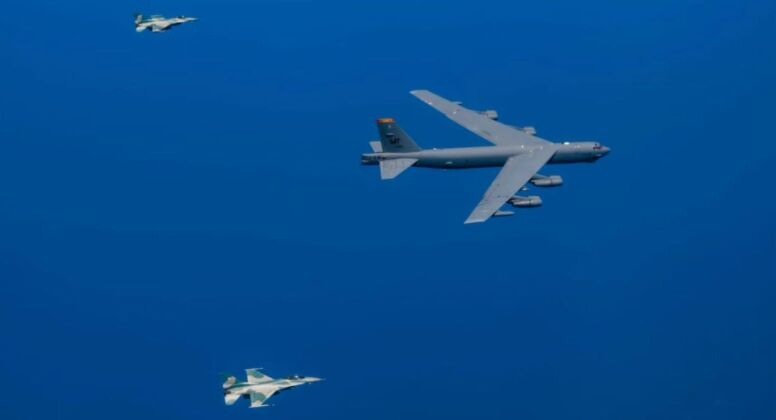USA B-52 nuclear bombers in Indonesia
and the Treaty of Southeast Asia Nuclear Weapon-Free Zone
When recalcitrant Asian leaders are firming ties with NATO, and the US hegemon is integrating south Korea security arrangement with Europe, and had quasi-allianced with Singapore, a new geostrategic dimension is emerging in the Asia-Pacific landscape with the arrival of B-52H nuclear bombers on the soil of a southeast Asia archipelago country of Indonesia, (military watch, 21/06/2023).
This is against the principle of maintaining ASEAN as a Zone of Peace, Freedom and Neutrality (Zopfan), which means the region remains free of nuclear weapons and their use; more details HERE.
One cannot analyse the geopolitics and the major conflicts since post-1945 by ignoring a fact that the US empire has been actively amassing military threats in the immediate territorial surroundings of its main dual rivals, (Caitlin Johnstone, 11th. July 2023).
Recently, the U.S. Air Force made its first ever deployment of B-52H Stratofortress intercontinental range strategic bombers to Indonesia on June 19, landing at the strategically located Kualanamu International Airport on the island of Sumatra. The bombers were escorted by three Indonesian Air Force F-16 Fighting Falcon fighter jets, which alongside Russian Su-27s and Su-30 form the backbone of the country’s fleet after being acquired second hand from the United States.
The B-52s were deployed from the U.S. Air Force’s leading facility in the region, Andersen Air Force Base on Guam, where nuclear armed bombers have been stationed near continuously for decades.
The deployment of these B-52s came about after Indonesia initially refused to permanently host American military aircraft on its territory, but after an intense strong-armed pressure from Washington had to alter its position when many Pacific Island countries had begun to deploy American (military) assets on a permanent basis, (read Blue Pacific, 20th. September, 2022).
Basing in Indonesia has been a key objective since the Barak Obama administration launched The American Pivot to Asia Initiative early in its first term, (Brookings, 21/12/2011).
Under this geostrategic posture - by which the Pentagon reoriented its assets and finetuned its focus towards the India and Pacific regions (see US Indo-Pacific Strategy) - this is always articulated in robust response to challenges confronting US military dominance in the Asia-Pacific Basin ostensibly by China’s defence capabilities.
These B-52s were recently confirmed to be set to remain on permanent deployment in Northern Australia, which could pave the way for more frequent stopovers in Indonesia.
The ABC’s Four Corners reported that the US is planning to build dedicated facilities for up to six B-52 bombers at the Tindal air base, south of Darwin.
This positioning will not only increase the chance of Australia being drawn into an Asia conflict, but she is opting for it, too, (pngattitude, 28/03/2023).
The very worst outcome for Australia would be to engage in a war against China, but the thrust of Australia’s Defence Strategic Review (DSR) is to beat the drums of war, (Mike Lyons, 15/06/2023), and AUKUS is the catalyst for it, (see John Menadue and Aran Martin, 15/03/2023).
Not only are concern Australians wary of an impeding Taiwan Strait-China 2025 dire conflagration, but that a NATO’s provocative lurch eastward is contributing to an imminent catastrophic outcome.
Related Readings
This post is an excerpt from a longer essay in firesstorms.



